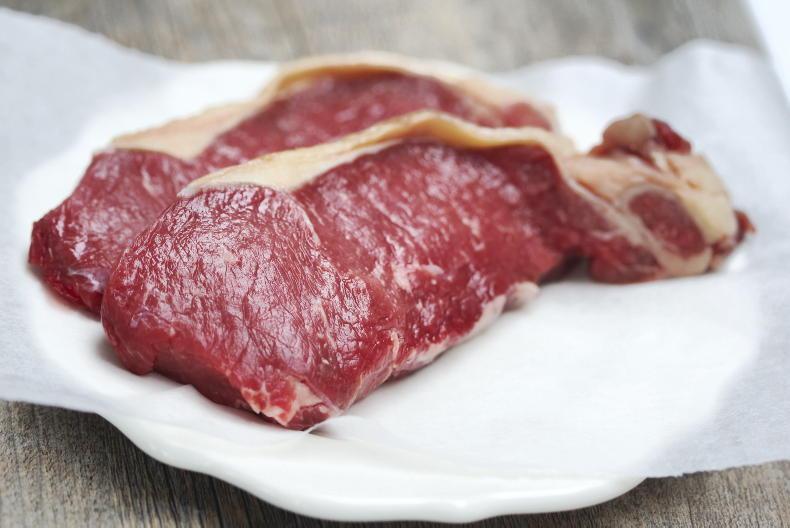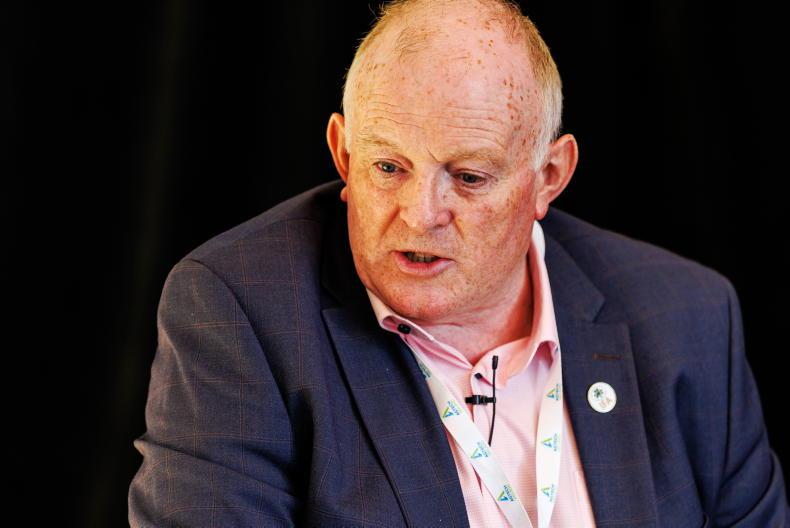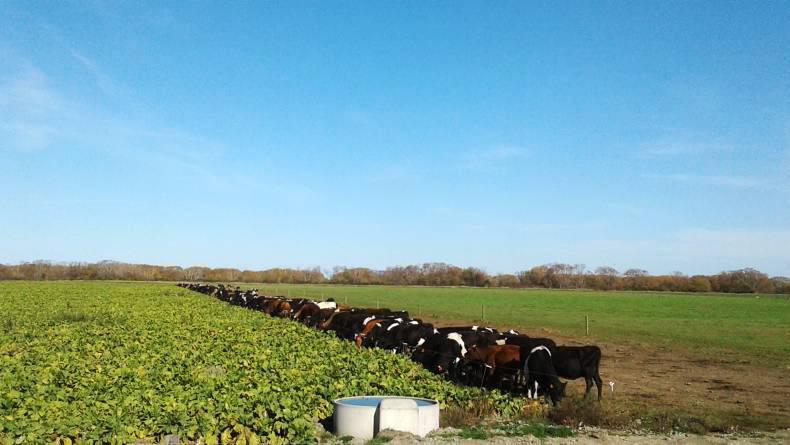Grassland management is the foundation of dairy farming in New Zealand. With milk prices having dropped from a peak of $8.50/kg MS in 2013/14 season to a low of $3.90/kg MS this season, the importance of getting the maximum return from your grass is essential while bought in feed is diminished.
With cost of production on this farm at $3.70/kg MS, expenses are being kept to a minimum to ensure this business stays afloat.
Irrigation
With approximately 625mm of rainfall per year in this region, irrigation is one of the main drivers of grass growth, which powers the dairy industry in the Canterbury Central plains. The farm I am working on is irrigated by three pivot irrigators, K-lines and sprinklers, with a running cost of $26,000 in the 2014/15 grazing season. The water is sourced from two wells and the local Rakaia River, which is stored in an irrigation pond on the farm.
Irrigation is something that is not needed in Ireland and this gives Irish dairy farmers the opportunity to produce milk at a very low cost. However grassland management has to be perfected to benefit from the grass growth that our climate gives.
Weekly farm walk
The first step in grassland management is to carry out a farm walk, which is done routinely every Tuesday on our farm. This gives a week by week analysis of grass growth and helps plan the grazing rotation for the cows.
The farm is currently producing 13T dm/ha of grass. This is quite low for the Canterbury region, with some farms achieving as high as 18T dm/ha. However those yields are restricted on this farm due to the stony silt loam soil type on the farm.
Precise pasture allocation improves the management of the grass as the farmer knows exactly how much grass the cows are consuming and has complete control over residuals.
Although the farm is not producing massive yields in terms of tonnes dm/ha, the grass is still managed to produce the best quality of grass needed for the cows to convert to milk.
Residuals
Particular attention is given to residuals, with a target post grazing residual of 1500kg dm/ha. The target is to graze grass at the three-leaf stage.
If grass goes past this stage it can have consequences such as feeding long stemmy grass which lacks substance. Other consequences include the pasture not being fully utilised, a reduction in the pasture growth and an overall impact on the animal’s performance. Precise pasture allocation improves the management of the grass as the farmer knows exactly how much grass the cows are consuming and has complete control over residuals.
Grazing rotation
Currently our grazing rotation has been extended to a 30 day rotation due to the reduction in grass growth as we head into autumn. Palm Kernel (PK) has also been introduced in the last two weeks as a supplement to reduction in grass growth. Costing $260/t it is a cost effective supplement. PK has a high protein content of 17% and a metabolic energy (ME) of 11.7MJ/kg DM, making it a worthwhile supplement to introduce at this time of the year into the cows’ diet.
Cows are currently being allocated 17kg DM of grass/day and also 3kg of PK/day. The introduction of PK helps cows to put on condition coming into the dry period also.
What I have gained over my short period in New Zealand so far is that monitoring grass growth and analysing grass walks are key to a successful grass based dairy system. Maximising leaf availability to the cow is essential in a low cost grass to milk system.
Barry Purcell is an agricultural science student at UCD and travels on the professional work experience programme supported by the Irish Farmers Journal and the Agricultural Science Association.
Read Barry's first blog from New Zealand below.
Finding New Zealand’s farming greatness beneath the surface
Grassland management is the foundation of dairy farming in New Zealand. With milk prices having dropped from a peak of $8.50/kg MS in 2013/14 season to a low of $3.90/kg MS this season, the importance of getting the maximum return from your grass is essential while bought in feed is diminished.
With cost of production on this farm at $3.70/kg MS, expenses are being kept to a minimum to ensure this business stays afloat.
Irrigation
With approximately 625mm of rainfall per year in this region, irrigation is one of the main drivers of grass growth, which powers the dairy industry in the Canterbury Central plains. The farm I am working on is irrigated by three pivot irrigators, K-lines and sprinklers, with a running cost of $26,000 in the 2014/15 grazing season. The water is sourced from two wells and the local Rakaia River, which is stored in an irrigation pond on the farm.
Irrigation is something that is not needed in Ireland and this gives Irish dairy farmers the opportunity to produce milk at a very low cost. However grassland management has to be perfected to benefit from the grass growth that our climate gives.
Weekly farm walk
The first step in grassland management is to carry out a farm walk, which is done routinely every Tuesday on our farm. This gives a week by week analysis of grass growth and helps plan the grazing rotation for the cows.
The farm is currently producing 13T dm/ha of grass. This is quite low for the Canterbury region, with some farms achieving as high as 18T dm/ha. However those yields are restricted on this farm due to the stony silt loam soil type on the farm.
Precise pasture allocation improves the management of the grass as the farmer knows exactly how much grass the cows are consuming and has complete control over residuals.
Although the farm is not producing massive yields in terms of tonnes dm/ha, the grass is still managed to produce the best quality of grass needed for the cows to convert to milk.
Residuals
Particular attention is given to residuals, with a target post grazing residual of 1500kg dm/ha. The target is to graze grass at the three-leaf stage.
If grass goes past this stage it can have consequences such as feeding long stemmy grass which lacks substance. Other consequences include the pasture not being fully utilised, a reduction in the pasture growth and an overall impact on the animal’s performance. Precise pasture allocation improves the management of the grass as the farmer knows exactly how much grass the cows are consuming and has complete control over residuals.
Grazing rotation
Currently our grazing rotation has been extended to a 30 day rotation due to the reduction in grass growth as we head into autumn. Palm Kernel (PK) has also been introduced in the last two weeks as a supplement to reduction in grass growth. Costing $260/t it is a cost effective supplement. PK has a high protein content of 17% and a metabolic energy (ME) of 11.7MJ/kg DM, making it a worthwhile supplement to introduce at this time of the year into the cows’ diet.
Cows are currently being allocated 17kg DM of grass/day and also 3kg of PK/day. The introduction of PK helps cows to put on condition coming into the dry period also.
What I have gained over my short period in New Zealand so far is that monitoring grass growth and analysing grass walks are key to a successful grass based dairy system. Maximising leaf availability to the cow is essential in a low cost grass to milk system.
Barry Purcell is an agricultural science student at UCD and travels on the professional work experience programme supported by the Irish Farmers Journal and the Agricultural Science Association.
Read Barry's first blog from New Zealand below.
Finding New Zealand’s farming greatness beneath the surface














SHARING OPTIONS